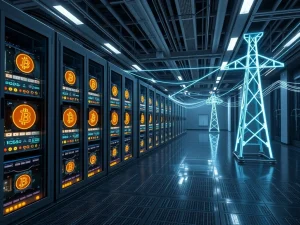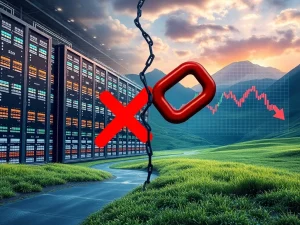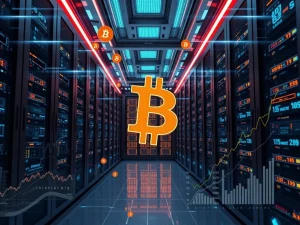Unlock Steady Payouts: How to Mine Bitcoin at Home in 2025
Ever wondered how new Bitcoin enters the world? As Bitcoin gains legitimacy with institutional investment and breaks price barriers, more people are looking to get involved directly. Mining is the process that creates new Bitcoin and validates transactions. If you’re curious about contributing to the network and potentially earning rewards, you might be asking: how can I mine Bitcoin at home in 2025?
Throughout 2024 and into 2025, the crypto landscape has seen significant shifts. Companies like Strategy and Metaplanet are adding BTC to their balance sheets. Regulatory environments in the US and EU are becoming clearer. And the Bitcoin price has reached new highs after the halving and increased ETF demand. All this makes exploring Bitcoin mining 2025 more appealing for individuals.
This guide breaks down four realistic ways you can mine Bitcoin from the comfort of your home, covering the gear, potential costs, and expected returns for each method.
Trying Your Luck with Lottery Mining
If you’re on a tight budget but want a taste of mining, lottery mining offers a low-cost entry point. This method involves using minimal hash power to try and solve a block entirely on your own. While statistically improbable – a solo miner recently hit a block reward with just 3 TH/s, a result expected to take thousands of years – these rare wins keep the concept alive.
Small, low-power devices like the Bitaxe HEX (around $600, 3 TH/s) or the GekkoScience R909 (1.5 TH/s USB miner) are popular for this. They pair easily with low-power computers like a Raspberry Pi. These devices aren’t designed for consistent income; they’re more like a digital lottery ticket that also helps secure the network. People do it for the challenge, the learning experience, and the slim chance of a large payout. Solo CKPool is a platform supporting this approach, allowing solo miners to submit shares directly.
Pros:
- Very low initial cost
- Low power consumption
- Supports network decentralization
- Chance of a large, single payout (though extremely rare)
Cons:
- Winning is highly improbable
- Not a source of steady income
Serious Hardware: Solo ASIC Mining
Stepping up from lottery mining means investing in purpose-built hardware called ASICs (application-specific integrated circuits). ASIC mining offers significantly more hash power, improving your odds compared to low-power devices, but it’s still a long shot for solo success at home.
High-end models in 2025, like the Antminer S21 Hydro, can reach 400 terahashes per second (TH/s). The entire Bitcoin network operates at around 500 exahashes per second (EH/s), meaning one S21 Hydro contributes about 0.00008% of the total. Your daily chance of finding a block solo is about 1 in 8.6 billion.
To improve chances, you’d need multiple ASICs, requiring substantial investment, proper cooling (ventilation or immersion), and significant, cheap electricity. Running 20 ASICs might reach 8 petahashes per second (PH/s), theoretically allowing you to find a block about once a year. The appeal of solo ASIC mining is keeping the entire block reward (currently over 3 BTC plus fees) if you succeed. However, for most home setups, the unpredictability and high capital/running costs make it impractical for consistent returns.
Pros:
- Highest potential individual payout (keep entire block reward)
- Full control over your operation
Cons:
- Very high upfront hardware cost
- Significant electricity and cooling needs
- Winning is still highly improbable for small setups
- Unpredictable income
Joining Forces: Bitcoin Mining Pool
For most home miners seeking regular payouts, joining a Bitcoin mining pool is the practical solution. A pool combines the hash power of many miners. When the pool finds a block, the reward is shared among participants based on their contribution.
This method smooths out the income stream. Instead of waiting years for a solo block, your ASIC’s hash power (e.g., 400 TH/s from an S21 Hydro) earns you a proportional share of the pool’s frequent block rewards. Major pools like Foundry USA, Antpool, ViaBTC, and F2Pool mine thousands of blocks monthly.
Pools use different payout models: FPPS (Full Pay Per Share) pays for every valid share submitted, offering stability. PPLNS (Pay Per Last N Shares) pays only when a block is found but can yield slightly more over time. Setting up involves creating a pool account, pointing your miner to the pool server, and providing your Bitcoin address. While individual payouts are small, they are consistent, making this the most popular method for home miners aiming for steady income.
Pros:
- Consistent, predictable payouts
- Lower risk compared to solo mining
- Easier to get started with modest hardware
Cons:
- Share block rewards with the pool
- Pool fees apply
- Less decentralized than solo mining
Hands-Off Approach: Cloud Mining Bitcoin
If you want exposure to mining rewards without managing hardware, cloud mining Bitcoin is an option. You rent hash power from a remote provider who operates the equipment. This eliminates the need for space, cooling, and direct electricity costs.
You buy a contract for a specific amount of hash power for a set period. The provider handles the infrastructure, and you receive a share of the mined Bitcoin proportional to your rented power. Reputable platforms exist, like NiceHash, BitDeer, and ECOS, offering various contracts.
However, cloud mining has a history of scams and unprofitable contracts. Service fees and increasing mining difficulty often make contracts less profitable than expected. You rely entirely on the provider’s honesty and efficiency. It might be suitable if you have no access to cheap power or space, or view it as a speculative investment. For consistent returns or a hands-on experience, running your own gear or simply buying BTC is often better.
Pros:
- No hardware management or maintenance
- No heat, noise, or direct electricity bills at home
- Easy to start
Cons:
- High risk of scams and unprofitable contracts
- Lack of control over hardware
- Fees can erode profits
- Less transparent than owning your equipment
Choosing Your Path to Mining at Home
Mining Bitcoin at home in 2025 offers several avenues, each with distinct pros and cons. Lottery mining is cheap and fun but relies on extreme luck. Solo ASIC mining provides control and the chance of a large win but is highly capital-intensive and unpredictable for individuals. Joining a mining pool is the most practical way to earn steady, albeit smaller, payouts. Cloud mining offers convenience but comes with significant risks and often thin margins.
Your choice depends on your budget, risk tolerance, technical interest, and goals. Whether you’re aiming for a speculative jackpot, a consistent income stream, or simply want to learn how it works, understanding these options is the first step. Whatever path you choose, be sure to research thoroughly and understand the costs and potential returns involved.









